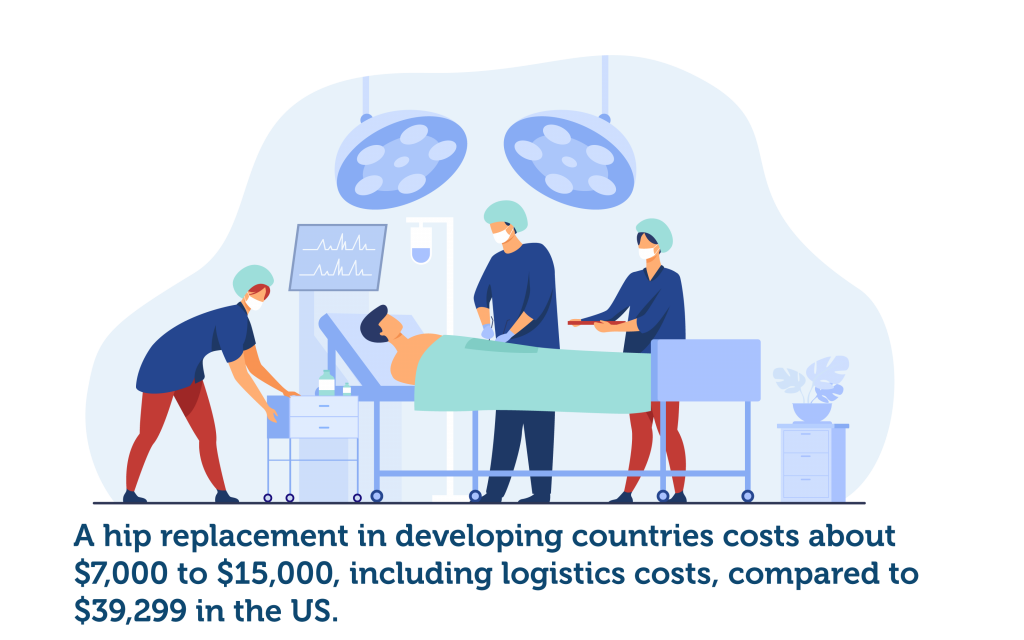
Diabetes and Health Equity in the Workplace
Workplace equity is more than a buzzword—it’s a lifeline in the fight against diabetes and the health gaps shaped by where we live, work, and grow.


Мedical tourism, by definition, refers to people traveling outside their country of residence to seek medical treatment.
Medical tourism started in ancient Greece, when those who worshiped Asclepius, the god of medicine, traveled to his temple to undergo healing rituals. Later, in the 17th century, with the emergence of spa towns, affluent people traveled worldwide to seek medical cures in the spa waters. However, traveling for surgery emerged more recently, gaining ground in the 1980s.
Recently, in the 20th century, people mostly traveled from underdeveloped to developed countries to access highly trained professionals and better facilities.
Yet the following medical tourism statistics show that today people mostly travel to less developed countries for various medical and healthcare needs. Primarily, they undergo procedures abroad due to low healthcare costs and no delays. But sometimes, they also travel to specific destinations to seek health services not available or not covered by health insurance in their country.
However, people don’t travel only for treatments and procedures. In fact, healthcare tourism now also involves wellness tourism, with demands even for health coaching or disease management.
In recent years, the medical tourism industry has been rapidly growing.
These medical tourism statistics show that this trend has remarkably increased human mobility globally.
Globalization, digitalization, and significantly increased costs are the primary reasons for the surge in international medical travel. Thus, many countries put efforts into developing their health and medical tourism as it can bring significant economic gains.

Many countries put health tourism at the center of their tourism policies.
Yet, less developed countries are becoming medical tourism destinations attracting more patients mainly due to lower costs. Even though these countries might not be as progressive as others, investments in their healthcare systems enable them to offer advanced and progressive healthcare services to health tourists.
The US has the most expensive healthcare system in the world.
The health care spendings per capita are the highest at an average of $12,318. These costs are almost two times higher than other countries.
Therefore, it is no surprise that many Americans engage in medical travel abroad to access treatments and procedures at a healthcare facility at lower costs.
On the other hand, the American health care system also attracts many outbound patients because of its high-quality services and proximity to large patient markets.

Treatments and availability are critical factors for people seeking medical treatment abroad. Yet the most significant reason is lower costs, especially for people traveling from developed nations.
However, as cheaper and more easily accessible it is, there are disadvantages to medical tourism. Poor quality of care, communications challenges, complications, or infections are a few examples of why taking out medical tourism insurance is advisable.
The most significant advantage of medical tourism is that it saves on costs. The reason why facilities in developing countries can offer lower prices is related to the country’s economic status.
Underdeveloped countries have lower per capita gross domestic product, which means they have lower incomes. As a result, healthcare treatments and procedures prices are much lower compared to wealthy countries.

Patients would not want to get treatment in an unlicensed hospital or center.
For that reason, the International Society for Quality in Health Care Inc. (ISQua) recognizes only specific organizations’ accreditations, the most common being the Joint Commission International, which ensures that accredited hospitals or clinics meet the same standards.
As ISQua puts it: “Accreditation is a formal process to ensure delivery of safe, high-quality health care based on standards and processes devised and developed by health care professionals for health care services. It is also a public recognition of achievement by a healthcare organization, of requirements of national healthcare standards”.
As medical tourism statistics show, the growth of medical tourism is constant and rapid. All markets are expanding, but South East Asia is taking the lead in medical tourism.
These medical tourism statistics show that medical tourism is gaining more and more popularity, especially in developing countries.
Due to high costs, poor accessibility, and long waiting times, many people travel abroad to seek appropriate medical treatments and procedures.
*We’re using an archived version of the page as the source.
Browse our curated list of vendors to find the best solution for your needs.
Subscribe to our newsletter for the latest trends, expert tips, and workplace insights!

Workplace equity is more than a buzzword—it’s a lifeline in the fight against diabetes and the health gaps shaped by where we live, work, and grow.

Delve into the importance and challenges of price transparency, exploring its crucial significance for patients, providers, and the overarching healthcare system.

Gain insight into the current state of adoptions in the United States with 50+ crucial statistics and trends, providing valuable information on the evolving adoption landscape.

In response to the demand for an improved consumer experience, both employers and insurers recognized and addressed the need for health advocacy programs.
Used by most of the top employee benefits consultants in the US, Shortlister is where you can find, research and select HR and benefits vendors for your clients.
Shortlister helps you reach your ideal prospects. Claim your free account to control your message and receive employer, consultant and health plan leads.